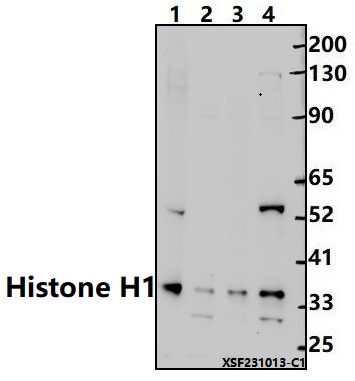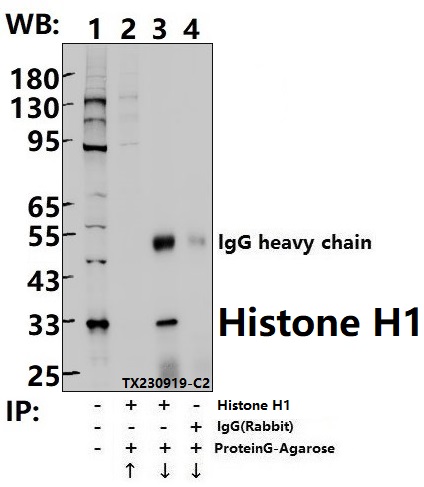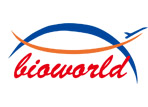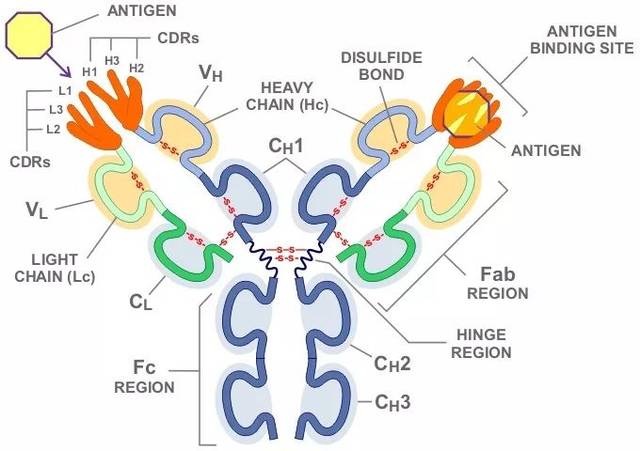Product Name :
Histone H1 (P13) polyclonal antibody Background :
Histones are evolutionarily conserved proteins that play a vital role in the compaction, storage, and regulation of DNA within the eukaryotic nucleus. The basic subunit of chromatin, the nucleosome core particle, is composed of DNA wound around two copies each of the core histone proteins H2A, H2B, H3, and H4. Formation of higher order chromatin structure is facilitated through the binding of linker histone H1 to the nucleosome particle (chromatosome) (4-6). In humans and mice, there are 11 distinct histone H1 variants, which include the somatic variants (H1.1, H1.2, H1.3, H1.4, and H1.5) that are expressed ubiquitously, and cell type specific variants such as H1t found in the testis and H1.0 expressed in terminally differentiated cells. Binding of histone H1 to chromatin limits accessibility of DNA to other proteins by stabilizing nucleosome positioning, competing for binding sites, and limiting the activity of chromatin remodeling proteins such as the SWI/SNF complex. Histone H1 binding is highly dynamic and is thought to be regulated by post-translational modifications. For example, cell cycle regulated phosphorylation of histone H1 leads to chromatin condensation and decondensation depending on the site of phosphorylation and histone H1.4 Lys34 acetylation by GCN5 has been linked to increased mobility of H1.4 and transcriptional activation. Product :
Rabbit IgG, 1mg/ml in PBS with 0.02% sodium azide, 50% glycerol, pH7.2. Storage&Stability :
Store at 4°C short term. Aliquot and store at -20°C long term. Avoid freeze-thaw cycles. Specificity :
Histone H1 (P13) polyclonal antibody detects endogenous levels of Histone H1 protein. Immunogen :
Synthetic peptide, corresponding to Human Histone H1. Conjugate :
Unconjugated Modification :
Unmodified
Histone H1 (P13) polyclonal antibody Background :
Histones are evolutionarily conserved proteins that play a vital role in the compaction, storage, and regulation of DNA within the eukaryotic nucleus. The basic subunit of chromatin, the nucleosome core particle, is composed of DNA wound around two copies each of the core histone proteins H2A, H2B, H3, and H4. Formation of higher order chromatin structure is facilitated through the binding of linker histone H1 to the nucleosome particle (chromatosome) (4-6). In humans and mice, there are 11 distinct histone H1 variants, which include the somatic variants (H1.1, H1.2, H1.3, H1.4, and H1.5) that are expressed ubiquitously, and cell type specific variants such as H1t found in the testis and H1.0 expressed in terminally differentiated cells. Binding of histone H1 to chromatin limits accessibility of DNA to other proteins by stabilizing nucleosome positioning, competing for binding sites, and limiting the activity of chromatin remodeling proteins such as the SWI/SNF complex. Histone H1 binding is highly dynamic and is thought to be regulated by post-translational modifications. For example, cell cycle regulated phosphorylation of histone H1 leads to chromatin condensation and decondensation depending on the site of phosphorylation and histone H1.4 Lys34 acetylation by GCN5 has been linked to increased mobility of H1.4 and transcriptional activation. Product :
Rabbit IgG, 1mg/ml in PBS with 0.02% sodium azide, 50% glycerol, pH7.2. Storage&Stability :
Store at 4°C short term. Aliquot and store at -20°C long term. Avoid freeze-thaw cycles. Specificity :
Histone H1 (P13) polyclonal antibody detects endogenous levels of Histone H1 protein. Immunogen :
Synthetic peptide, corresponding to Human Histone H1. Conjugate :
Unconjugated Modification :
Unmodified
-
 Western blot (WB) analysis of Histone H1 (P13) polyclonal antibody at 1:500 dilution Lane1:A2780 whole cell lysate(30ug) Lane2:Hela whole cell lysate(30ug) Lane3:PC12 whole cell lysate(30ug) Lane4:EC9706 whole cell lysate(30ug) Lane5:HEK293T whole cell lysate(30ug)
Western blot (WB) analysis of Histone H1 (P13) polyclonal antibody at 1:500 dilution Lane1:A2780 whole cell lysate(30ug) Lane2:Hela whole cell lysate(30ug) Lane3:PC12 whole cell lysate(30ug) Lane4:EC9706 whole cell lysate(30ug) Lane5:HEK293T whole cell lysate(30ug) -

Dexamethasone enhances trichosanthin-induced apoptosis in the HepG2 hepatoma cell line
PMCID: Pubmed No.:19891978
Maternal low-protein diet causes epigenetic deregulation of HMGCR and CYP7α1 in the liver of weaning piglets
PMCID: Pubmed No.:22444501
Down-regulation of Notch receptor signaling pathway induces caspase-dependent and caspase-independent apoptosis in lung squamous cell carcinoma cells
PMCID: Pubmed No.:22583356
Suppression of endothelial cell adhesion by XJP-1, a new phenolic compound derived from banana peel
PMCID: Pubmed No.:22609942
Retigeric Acid B Exhibits Antitumor Activity through Suppression of Nuclear Factor-kB Signaling in Prostate Cancer Cells in Vitro and in Vivo
PMCID: Pubmed No.:22666431
Poly (ADP-ribose) polymerase inhibition protects epileptic hippocampal neurons from apoptosis via suppressing Akt-mediated AIF translocation in vitro
PMCID: Pubmed No.:23201256
V8, a newly synthetic flavonoid, induces apoptosis through ROS-mediated ER stress pathway in hepatocellular carcinoma
PMCID: Pubmed No.:23835921
Aspirin Treatment Improved Mesenchymal Stem Cell Immunomodulatory Properties via the 15d-PGJ2/PPARγ/TGF-β1 Pathway
PMCID: Pubmed No.:24730450
MTA1 regulates higher-order chromatin structure and histone H1-chromatin interaction in-vivo.
PMCID: Pubmed No.:25205035
IL‐17 regulates the expressions of RANKL and OPG in human periodontal ligament cells via TRAF6/TBK1‐JNK/NF‐κB pathways
PMCID: Pubmed No.:25263088
Glucocorticoid receptor is involved in the breed-dependent transcriptional regulation of 3β-hydroxysteroid dehydrogenase in the liver of preweaning piglets
PMCID: Pubmed No.:26008782
MTA1 regulates higher-order chromatin structure and histone H1-chromatin interaction in-vivo.
PMCID: Pubmed No.:25205035
IL‐17 regulates the expressions of RANKL and OPG in human periodontal ligament cells via TRAF6/TBK1‐JNK/NF‐κB pathways
PMCID: Pubmed No.:25263088
Aspirin Treatment Improved Mesenchymal Stem Cell Immunomodulatory Properties via the 15d-PGJ2/PPARγ/TGF-β1 Pathway
PMCID: Pubmed No.:24730450
Glucocorticoid receptor is involved in the differential expression of hepatic 3β‐hydroxysteroid dehydrogenase between barrows and boars at finishing stage
PMCID: Pubmed No.:28877400
Dietary betaine activates hepatic VTGII expression in laying hens associated with hypomethylation of GR gene promoter and enhanced GR expression
PMCID: Pubmed No.:29375826
Dietary betaine improves egg-laying rate in hens through hypomethylation and glucocorticoid receptor–mediated activation of hepatic lipogenesis-related genes
PMCID: Pubmed No.:32475449
Bioworld Biotech only provide peptides for our antibodies and do not provide additional peptide customization services.
Price/Size :
USD 368/1mg/vial
Tips:
For phospho antibody, we provide phospho peptide(0.5mg) and non-phospho peptide(0.5mg).Describe :
Blocking peptides are peptides that bind specifically to the target antibody and block antibody binding. These peptide usually contains the epitope recognized by the antibody. Antibodies bound to the blocking peptide no longer bind to the epitope on the target protein. This mechanism is useful when non-specific binding is an issue, for example, in Western blotting (WB) and Immunohistochemistry (IHC). By comparing the staining from the blocked antibody versus the antibody alone, one can see which staining is specific; Specific binding will be absent from the western blot or IHC performed with the neutralized antibody.Formula:
Synthetic peptide was lyophilized with 100% acetonitrile and is supplied as a powder. Reconstitute with 0.1 ml DI water for a final concentration of 10 mg/ml.The purity is >90%,tested by HPLC and MS.
Storage:
The freeze-dried powder is more stable. For short time at 2-8°C. For long term storage store at -20°C.
Note :
This product is for research use only (RUO only). Not for use in diagnostic or therapeutic procedures.
 Histone H1 (P13) polyclonal antibody
Histone H1 (P13) polyclonal antibody  Datasheet
Datasheet COA
COA MSDS
MSDS SHIP
SHIP